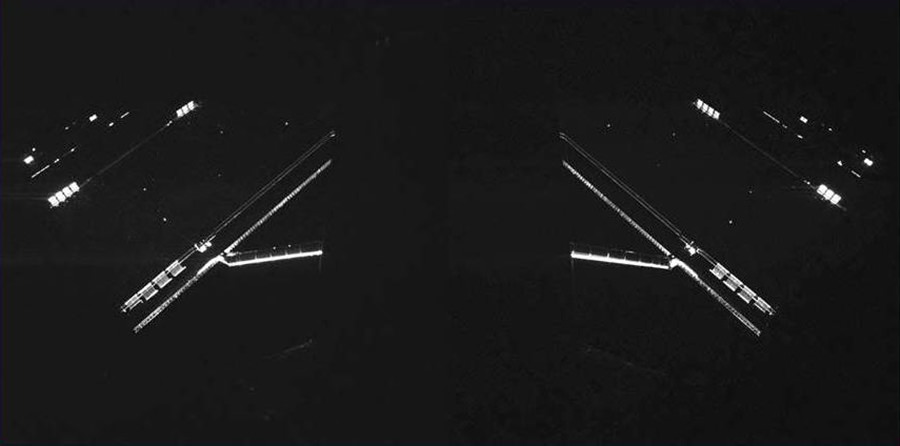Philae is awake… and taking pictures! This image, acquired last night with the lander’s CIVA (Comet nucleus Infrared and Visible Analyzer) instrument, shows the left and right solar panels of ESA’s well-traveled Rosetta spacecraft, upon which the 100-kilogram Philae is mounted.
Philae successfully emerged from hibernation on March 28 via a wake-up call from ESA.
After over a decade of traveling across the inner Solar System, Rosetta and Philae are now in the home stretch of their ultimate mission: to orbit and achieve a soft landing on comet 67/P Churyumov-Gerasimenko. It will be the first time either feat has ever been attempted by a spacecraft. Read more here.
Source: ESA Rosetta Blog


Is the gravity of a small comet great enough to “hold” a spacecraft in orbit? Or will Rosetta have to use thrusters to maintain a steady distance from the comet?
According to this article in The Guardian, it states:
Huh, that’s cool. That will really decrease the possible length of the mission.
Does a “powered orbit” like that still count as an orbit, I wonder?
Well, according to Wikipedia’s Understanding orbits section, I don’t think so.